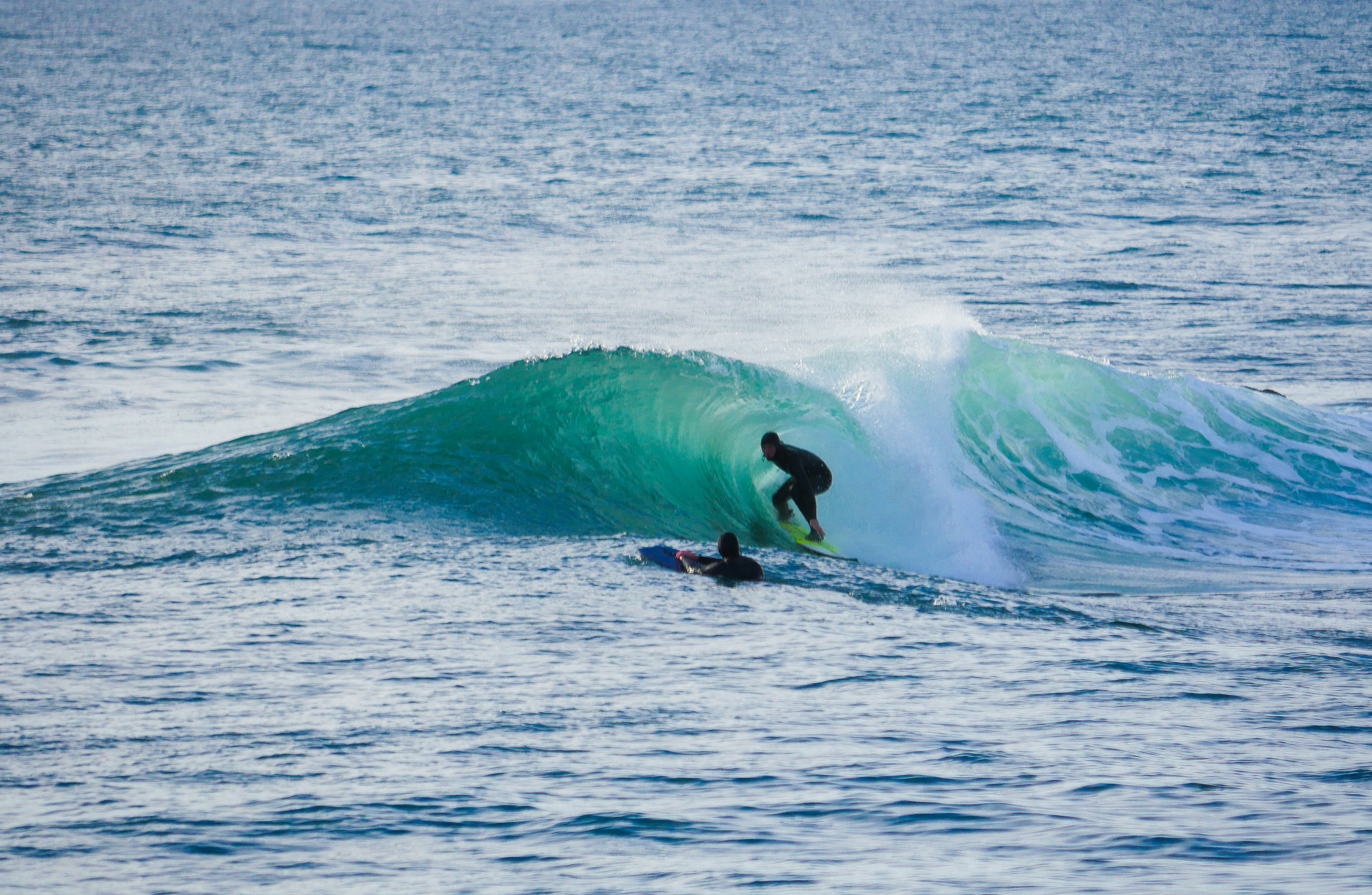The Truth About Balance Training for Surfers
Written on July 2nd 2021, By Ben Jenkins

Written on July 2nd 2021, By Ben Jenkins
Ok – let me start by saying that there is definitely a place for balance training, but not where you might think. Let’s start by defining what I mean by balance training. For a long time, surfers and surf coaches have believed that they can increase performance in the water through improved balance. Strategies such as unstable surfaces (BOSU, stability cushions) and balance boards (Indo board) are popular methods used to improve sensorimotor abilities with the intention to transfer to the water. But how much does it transfer?
In this post we are going to dive in and see if balance training will improve surfing performance. After all, training is all about transfer. So it’s important we understand whether a particular type of training will provide us with the performance improvements we are looking for. We will take a look at what the research has said over the years, see what we can take from it and apply to our own training.
One of my first arguments when it comes to using balance training for surfing, is how unstable is the surfboard when its travelling along a wave? Basic physics would suggest that as velocity increases, so does stability and this is true when riding a wave. As the surfer generates speed, stability increases. Granted, that in the early phases of learning on small, slower waves, balance plays a much bigger role but when does this become a less important performance marker?
This leads me onto my next point of balance being situation specific. Having balance on a surfboard is a specific skill but doesn’t mean you have balance in other situations like on an ice rink or when playing basketball. Whenever we perform a specific task we develop proprioceptive qualities specific to that task. Now I’m far from a longboard specialist, but I imagine trying to hang 5 on the end of a longboard is completely different to doing so on an Indo board. I spoke about mimicking sport specific skill in training in a previous post and how we run the risk of interfering with the skill that’s already being performed, creating negative transfer.
With that being said, lets see what the research says on unstable surface training in relation to performance increases. By and large, few studies have shown unstable surface training to be superior to stable surface training when it comes to strength and power development, or in dynamic postural control.
The most notable study by Tai Tran and the team at the Hurley Surfing Australia High Performance Centre reported a 6.5% decrease in lower body power when completing a 7-week unstable surface training intervention when compared to a 5.7% improvement for the stable surface training group.
Why is this important? Well, we know that higher scoring turning manoeuvres are underpinned by lower body force generating capabilities, but landing high risk manoeuvres requires the surfer to be able to effectively absorb force on landing which is also underpinned by lower body strength qualities. So in the quest for building strength and power that transfers to the water, stable surface training wins every time.
This same study also reported no difference between stable and unstable groups in dynamic postural control, suggesting that postural control can be improved but not necessarily a superior method.
Now don’t get me wrong, I don’t want to completely disregard balance training as I do believe it has a place. What I am saying is that if we are breaking down what our ‘big rocks’ of performance are for surfing, I would not be substituting strength and power for balance training. If the jar represents our training week and the big rocks in there represent strength, power, mobility and stability (different to balance – stability is a state, balance is a proficiency). We need to prioritise them going in first, otherwise the sand (balance) takes up too much room and doesn’t leave enough room for our ‘big rocks’.

Instead, lets get all of our big rocks in the jar and sprinkle the sand (balance) on top. This means it might take up 5-10% of our training in the week instead of captivating a larger majority of time.

Time to train is always going to be the limiting factor for anyone that isn’t a professional athlete, so lets make sure we are using our time efficiently with methods that will have greater transfer to the water. For some examples of what I believe should go into a surf specific training programme, click here.
Now lets talk about where I believe balance training has its place and that is firstly during the rehabilitation process. Unstable surface training may be an appropriate strategy from for anyone returning from an ankle injury, or anything that requires the individual to regain proprioceptive and sensory signals. This however will need to be specifically prescribed by a rehabilitation specialist, so if you are recovering from an injury, please seek advice first.
The second is within the training week – but in modest doses! Whether that is as part of a warm-up or low intensity day. This could range from 1-2 sets and performed in an extensive nature (moderate intensity).
So, to recap what we have covered!
If you have found this post useful, please share it so that others may also benefit from it. If you would like any help with improving your surfing performance, please get in touch via the contact form on the website.
Shoot me a message using the form below and I’ll get back to you ASAP.